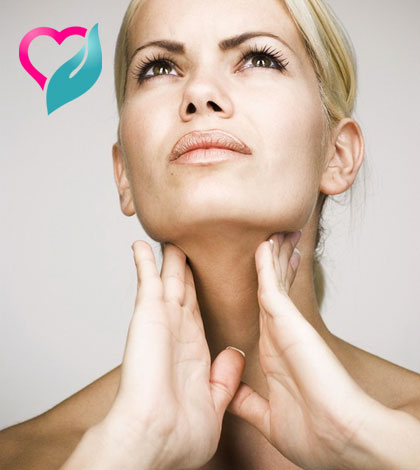What is hypothyroidism?
Hypothyroidism or underactive thyroid disease is a condition wherein the thyroid gland does not secrete enough hormones to regulate metabolism. Hypothyroidism slows down metabolism which directly affects your energy level by making you fatigued and sluggish most of the time.
[wp_ad_camp_1]
What are the symptoms of hypothyroidism?
Studies show that women are more prone to hypothyroidism then men. Symptoms usually show up in women who are in their 50s but young children, teenagers, and even infants can be victims of hypothyroidism. Symptoms show up as unexplained weight gain, fatigue, weakness, joint pain, muscle aches, chronic constipation, altered menstrual cycles accompanied by heavy bleeding, irritability, lack of libido, and even chronic depression. Severe cases of hypothyroidism can be life threatening.
[wp_ad_camp_4]
What are the causes of hypothyroidism?
The primary cause of hypothyroidism is iodine deficiency in the diet. The deficiency in iodine affects the normal production of thyroid hormones triiodothyronine (T3) and thyroxine (T4). Also remember that too much iodine in the diet can also lead to Hashimoto’s thyroiditis which cause hypothyroidism. Other causes of hypothyroidism include radiation therapy to the neck or head, certain medications, thyroid replacement therapy as well as thyroid surgery.
The connection between hypothyroidism and exercises
Even though thyroid gland is tiny, it has a very important role in maintaining the body’s daily functions. It helps convert the foods you eat into energy, also known as metabolism. People with underactive thyroid become fatigued and sluggish too soon and also gain unexplained weight. To combat weight gain, the need for exercise arises. Exercising on a daily basis helps you to effectively manage hypothyroidism; exercise burns excess calories and also triggers the production of endorphins, the feel good hormones.
According to Dr. Yaroslav Gofnung, an endocrinologist at the Los Robles Hospital, Calif, a low-impact aerobic exercise that does not put too much stress on your knee joints can help your heart rate go up as well as improve the lungs capacity. Walking is a low-impact aerobic exercise but avoid doing it if you have hypothyroidism with knee or ankle swelling.
Here are a few exercises that are suitable for people with hypothyroidism.
Exercise #1: Squats
This exercise needs you to stand upright with your feet slightly apart, then keeping the back straight bend your knees, go down to a sitting position, and from the sitting position slowly raise back to the standing position. Do 15 to 20 reps each set. Increase it to 3 sets of 15 to 20 reps in a week’s time.
Exercise #2: Overhead press
This exercise is typically done in a standing position. It involves you to move a pair of dumbbells from the shoulder and push it up until the elbows are straight and gets locked. Once you achieve this position, slowly lower your arms back to your shoulders. Do 15 to 20 reps each set and then increase to 3 sets of 15 to 20 reps.
Exercise #3: Lat pull-down
Lat pull-down exercise increases the strength of your back. To do this exercise, you have to keep your chest tall and with your elbows pointed down grab the pull-down bar and lower it to your chin or collar bone, back should be straight. Do 15 to 20 reps each set, then increase to 15 to 20 reps 3 sets.
[wp_ad_camp_2]
Exercise #4: Push-up
Push-up is a light exercise done for general fitness. To go this exercise, you have to get into a face-down prone position, keep your feet together and stretched out, keep your hands palms-down on the floor, elbows straight, then bend your elbows until your shoulder is very close to the ground, raise yourself up supporting your weight with your hands and the balls of your feet. Do 15 to 20 reps each set and increase it to 15 to 20 reps 3 sets.
Exercise #5: Rowing exercise
To perform this exercise you have to keep your feet secured with foothold straps of a rowing machine and with an overhand grip hold the handle and keeping your back straight pull the cable connected to the handle until it touches slightly below the chest. Do 15 to 20 reps each set and increase it to 15 to 20 reps 3 sets.
[wp_ad_camp_3]
Image courtesy: liza.ua , skinnymom.com , newhealthadvisor.com , cos.h-cdn.co , womenshealthmag.com , womenshealthmag.com , womensfitness.co.uk

































